How to plant a host in open ground
Hosta (Hosta) is a herbaceous perennial, a representative of the asparagus family. The plant was named after the Austrian botanist N. Host. In total, there are about 40 species, although the most common landing is the hosta of seven varieties. In nature, it grows in East Asia, the Far East, as well as on Sakhalin and the Kuriles.
- When they plant Khosta
- Choosing a landing site
- Which soil to choose
- Landing technology
- How to properly care
- Watering
- Fertilizer
- Mulching
- Pruning
- Landing features in different regions (Siberia, Ural, etc.)
- How to transplant a perennial?
- How beautiful to plant a host on the site (interesting uses in the landscape, combination with other plants)
- Why is the host not growing, what care does it lack?
- Can the hosta be grown as a houseplant?
- Useful videos
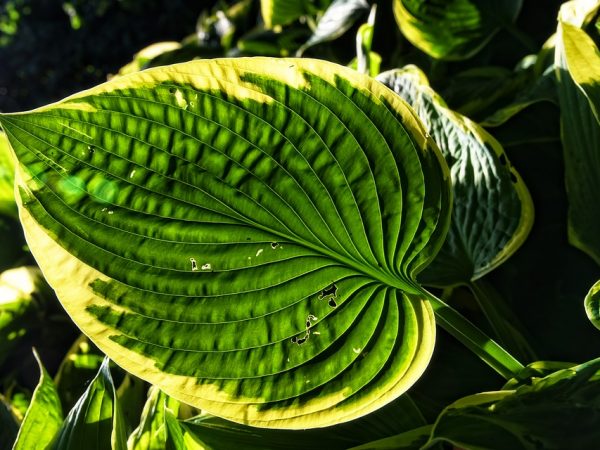
Where to put the host correctly
In Japan, revered as a sacred plant, its leaf stalks are an expensive delicacy. Appearing for the first time in England, the hosta did not immediately become popular with gardeners. Its beauty and unpretentiousness were appreciated only over time, when breeders began to develop new decorative varieties. There are seven main types: Fortune, Siebold, curly, wavy, plantain, tall, swollen. Each of the species has dozens of varieties and varieties.
When they plant Khosta
Better to plant in spring when the frost is over. This period is different in each climatic zone. But on average, this is the end of April - beginning of May. The soil must be warm enough for the roots of the plant to take root normally. In the spring, the planted bushes require frequent watering.
In the fall, it is important not to be late with the landing. Usually the deadline is until the end of September, when the bush still has time for rooting before frost. The plant itself is resistant to cold weather, but newly planted bushes need strengthening of the root system for better wintering. Therefore, most gardeners prefer spring planting of perennials in open ground.
Choosing a landing site
Hosta is one of the few plants that perfectly tolerates shade. Moreover, in a shaded area, the bush will grow thicker and taller than in the open sun. True, variegated (variegated) varieties still need lighting for at least a few hours a day, otherwise their brightness will be lost.
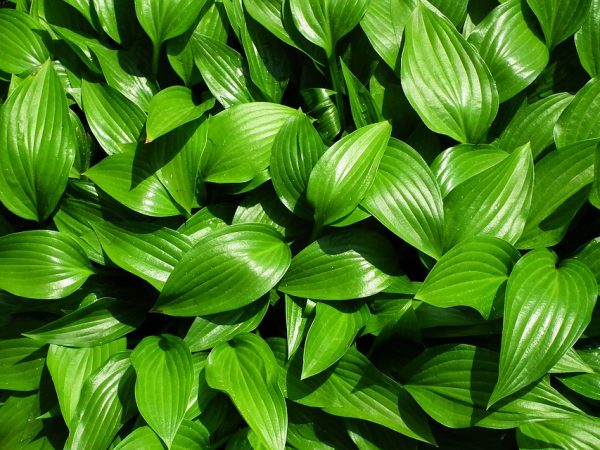
With what to plant a host in a flower bed photo
The main thing is that the landing site is not windy. Open hills are not suitable for them. The best option is sections along the walls from the north or northwest side. Protected from drafts, the flower will feel great.
In partial shade, varieties with white edging along the edge of the leaf grow well. In the sun, the border will burn out and lose its attractiveness. Varieties with a white area in the center of the leaf, on the contrary, need lighting. The same goes for varieties with completely white leaves. There is almost no chlorophyll in them, so the sun for such flowers is necessary for life.
Blue and blue varieties are only suitable for shade. Even a few hours of direct sun can weaken the plant and lose its original color.It is not for nothing that the host is called the “queen of the shady garden” - most of its varieties do not need lighting, preferring to do without the bright sun.
Which soil to choose
Needs loose, light soil with a predominance of humus. Such soils are called humus, they are prepared in advance before planting. In acidic clay soil, the hosta will grow poorly, rot, ornamental varieties will not reveal even half of their beauty potential.
Any ground for can be "brought to mind." Lighten heavy with compost, coarse sand and peat, dilute acidic with ash and dolomite flour, make sandy more nutritious with the help of organic matter. The main rule is to organize good drainage. This applies to any soil with any acidity.
Landing technology
If several bushes are planted, then the distance between the holes should be 30-50 cm. There are also giant varieties that grow strongly, therefore the distance between the bushes is greater - 90-100 cm. The drainage is first poured into the hole. Its composition is as follows:
- Expanded clay
- Finely chipped red brick
- Gravel
- Styrofoam
On top of the drainage, a layer of nutritious soil prepared in advance for the needs of the plant is poured. The bush is placed in a hole, the roots are straightened, sprinkled with earth on top. It is necessary to deepen it 3-4 cm below the soil.
Attention! It must be borne in mind that after planting the bush, the soil will still settle. The root collar may be on the surface, and this is very undesirable. So it is better to add more soil after shrinkage so as not to expose the neck.
How to care for
Taking care of the host is simple. It is not for nothing that it grows in the harshest conditions of the northern latitudes. However, a little more will be needed for varietal varieties of care. Then its decorative properties will manifest themselves in full force.
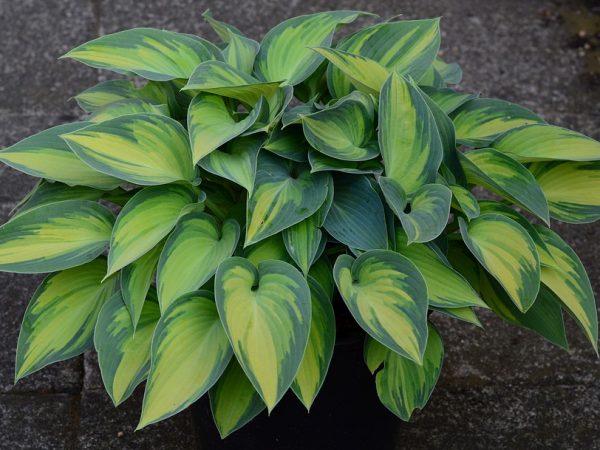
Where is it better to plant the host on the site
Watering
The root system should always be slightly moistened, so frequent watering is required. As soon as the topsoil dries 2-3 cm, it's time to water the bush. In summer, sometimes it is necessary to moisturize the flower in the morning and in the evening.
Shady terrain and an abundance of moisture are the best conditions for the development of the fungus. However, the perennial is naturally resistant to disease. Only prolonged waterlogging at low temperatures leads to the development of fungal diseases. Therefore, during a cold snap, watering is reduced. During the period of prolonged rains, the hosta is not watered.
Fertilizer
Fertilize three times: in spring, summer and autumn before wintering. However, this does not apply to newly planted bushes. They will get enough nourishment from the soil in the first year if the site has been properly prepared. The only way to feed them is manure in late autumn, so that the bush will more easily overwinter.
In the spring, when the leaves are just beginning to show up from the ground, you need to apply nitrogen fertilizer. The most commonly used is urea (carbamide). It is easy to find it in any store for summer residents. The nitrogen will start to stimulate the growth of the green mass of the bush.
In summer, the flower needs phosphorus and potassium. Although flowering for the hosta is secondary (it is ornamental-deciduous), phosphorus will give strength for flowering and further growth. Superphosphate is applied under the bush in June-July. A mineral complex in dry (granules) or liquid form is also suitable.
In autumn, perennials need organic matter. Manure, compost, peat, sapropel - all this improves the health of the bush and gives strength for future wintering. Be careful with poultry droppings - it has to be heavily diluted with water to reduce the concentration. Although its nutrient content is enormous. It is better to prepare sapropel (river silt) in advance from spring, by drying it in a warm shady place.
Mulching
Immediately after planting, the soil around the bush is mulched with sawdust and bark. It is advisable to take the bark of conifers rather than deciduous trees. Then the layer of mulch will serve as a barrier to infection and pests. It is very good to spread chopped tree branches on the ground. After 2-3 years, they turn into compost.
Ground cover plants are planted under the host as mulch.For example, the Spanish sedum, growing, protects the bush from moisture loss and overgrowth of weeds. The variety of sedum false Tricolor is also suitable for these purposes. Mulching for this perennial is imperative to soften the soil and maintain its nutritional value and moisture.
Pruning
After the leaves turn yellow, they need to be removed - trimmed with garden shears. In no case should you then use these leaves as mulch under the bushes! They are burned in the far corner of the garden to kill insect eggs and slug eggs.
If you cut off the leaves earlier than expected, the bush will not have time to gain strength for wintering. Although it will not become too critical. In the spring, foliage will still grow. Leaving it on the bush for the winter is highly discouraged.
Landing features in different regions (Siberia, Ural, etc.)
In the Urals and Siberia, simple hosta species are found in nature, but local gardeners also manage to grow rare, whimsical varieties of it. All manipulations (transplant, division) are carried out in the spring. In the summer, the soil is mulched with a thick layer of peat or humus.
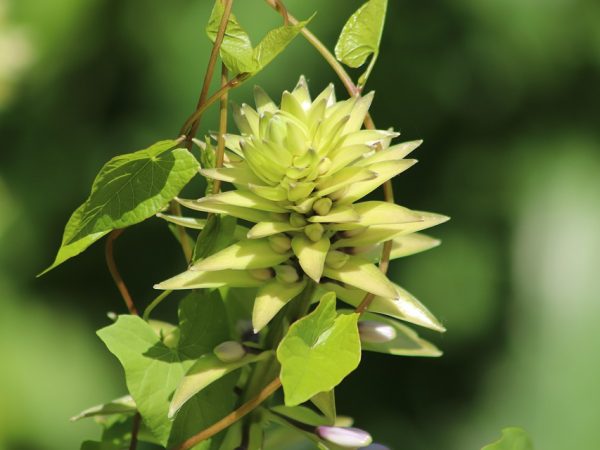
How to grow hosta from seeds at home
In the north, a bush is prepared in a special way for winter. Firstly, here it is initially not allowed to bloom, so that the bush gains more strength for wintering. All peduncles from the hosts are removed as they grow back. In autumn, the leaves are cut off, the roots are sprinkled with dry foliage and covered with non-woven material. The top is additionally covered with a film.
Watering in the northern regions requires special attention. It is here that it is most dangerous to pour this perennial. At low temperatures, waterlogging of the roots leads to the development of a fungus. Therefore, the hosta needs to be watered less often than in the southern latitudes: 3 times a week in the summer and even less often in the fall.
How to transplant a perennial?
Hosta can grow in one place for up to 20 years, however, in order to preserve decorativeness, it is advisable to replant bushes (especially varietal ones) every 5 years. At this time, the bush is propagated by the method of division. Which contributes to its rejuvenation.
The procedure is best carried out in the fall - until the end of September, so that the plant has time to take root. Cultivars such as Siebolda and Tokudama do not grow roots at all in the spring. By replanting them after winter, you can simply destroy the plant. Also, you should not transplant bushes up to 3 years of age - they may not transfer it.
The site for the transfer of bushes is dug up in advance - a month in advance. During this time, the soil will settle and acquire the desired consistency. The day before planting, the soil is watered abundantly. Then mark the holes at the required distance from each other (if there are several bushes). Next, the main bush is dug up and immediately transferred to a new place entirely or divided and seated in different holes.
How beautiful to plant a host on the site (interesting uses in the landscape, combination with other plants)
The host is often planted in the center of flower arrangements, thanks to its large variegated leaves of various shades and shapes. By picking up several varieties that are different from each other, you can achieve an excellent decorative effect. For example, plant giant varieties with large variegated leaves in the center, place hosts with elongated wavy foliage around the edges, and then plant blue varieties around.
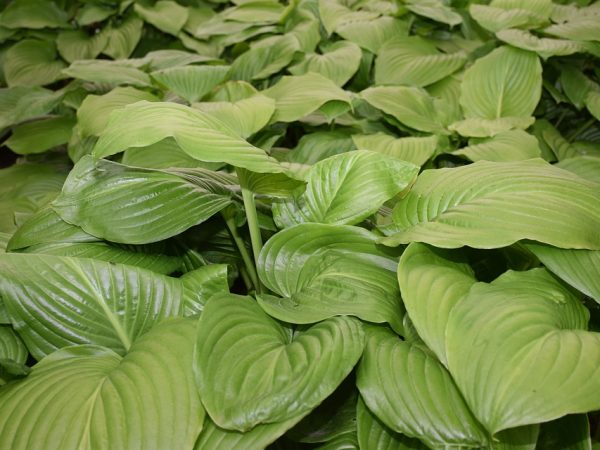
Planting and caring for the host in the open field
Varieties with solid leaves are used in landscape design as a background. In the foreground, peonies, astilbes, ferns and dicenters look good in front of them (its flowers in the form of hearts will definitely attract attention).
Hostas go well with conifers. The vertical accent of the composition can be achieved with phlox and daylilies. Combined with hosts, they will create a beautiful, cohesive composition. Cereals will also be appropriate in it: reed grass and miscanthus.
Why is the host not growing, what care does it lack?
Usually, there are no problems with the growth of a perennial.However, there are several main reasons why a plant can wither, stop growing leaf mass, fade:
- Incorrect landing site (most often, too bright lighting);
- Overdrying or lack of nutrients;
- Diseases and pests
If the first two points can be easily dealt with by transplanting and adjusting the irrigation and feeding regime, then the third point should be considered in more detail.
Of the pests for hosts, mice are the most dangerous. They gnaw not only the roots, but also the young leaves of the plant. One adult mouse is capable of destroying an entire bush in a short time, leaving stubs 5 cm above the ground. Slugs also spoil the leaves, but to a much lesser extent.
The only salvation from mice is a metal mesh dug into the ground around a flower bed with hosts. It will also protect other flowers - bulbous, which rodents also like to eat. For fidelity, you can also spread the poison for rodents around the perimeter, or even dig it around the roots.
Hosts are infected with a special virus called Hosta-X. There is no escape from him. It is necessary to transplant the remaining intact plants to another area. Fungicides will help against fungal diseases - Fitosporin, Tiovit, Fundazol. Also, hosts can grow poorly if winters in the region are too harsh. In this case, the hosts should be better covered in the fall.
Can the hosta be grown as a houseplant?
Hosta is quite suitable for growing in pots, however, the containers should be at least 15 liters. Drainage holes must be made not only in the bottom, but also in the side walls so that the roots "breathe" and do not rot. Such varieties as Ginsey Knife, Neptune, Yellow Polka are suitable for planting at home.
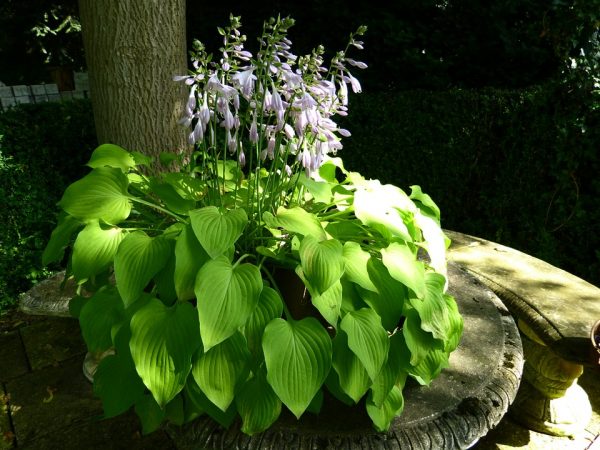
Where is it better to put the host and how to take care of it:
In containers, the hosta grows roots much more actively than in the open field and blooms more profusely. In this case, it is easier to monitor soil moisture, and the risk of getting sick or being eaten by pests is reduced to zero. However, the main point is the availability of free space for this voluminous plant.
Hosta is one of the most unpretentious plants, most often used to decorate city flower beds. She does not have to constantly monitor, carrying out complex care procedures. Hosta is able to grow in the most unfavorable conditions, in which no other plant will survive. However, only in a suitable environment does the flower show its maximum beauty.

